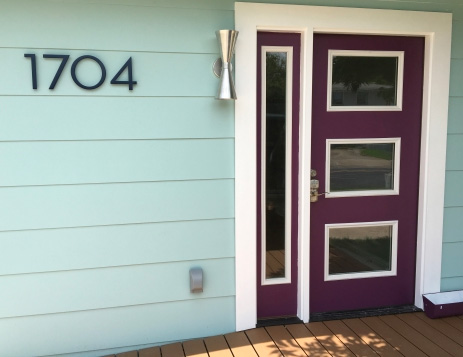 Even though their bodies may look mature, a teenager’s brain is not. They don’t always have the skills or ability to use words to describe what is going on internally. Their prefrontal cortex isn’t done growing yet. That’s the part of the brain where we can see long-range consequences, for example—something that teenagers are famously bad at. But despite the fact that they aren’t fully “cooked” yet, teenagers still need plenty of opportunities to practice their developing independence. But the challenge is that your teenager probably isn’t going to tell you that they want and need that independence in ways that will inspire you to give it to them. Instead, teenagers are more likely to argue, defy, or jump without asking (or thinking.)
Even though their bodies may look mature, a teenager’s brain is not. They don’t always have the skills or ability to use words to describe what is going on internally. Their prefrontal cortex isn’t done growing yet. That’s the part of the brain where we can see long-range consequences, for example—something that teenagers are famously bad at. But despite the fact that they aren’t fully “cooked” yet, teenagers still need plenty of opportunities to practice their developing independence. But the challenge is that your teenager probably isn’t going to tell you that they want and need that independence in ways that will inspire you to give it to them. Instead, teenagers are more likely to argue, defy, or jump without asking (or thinking.)
Whether they ask nicely or not, a parent who learns how to “translate” teenage behavior will be able to understand and respond in ways that are more effective and more loving. So here are three examples of typical teenage behavior, translated!
What your teenager is doing:
Eye rolling, shoulder shrugging, or giving one word answers: fine; dunno; whatever.
What it means:
“I need to feel less like a child. This kind of attitude/body language makes me feel more in charge and less under YOUR control. Plus, it puts space between us, which sometimes helps me to feel more grownup. But please don’t move away from me all the time because I still really need you. Sometimes this behavior is directly related to something that you are doing and sometimes it is not.
What they need:
Your teenager needs age-appropriate opportunities to feel in charge of his/her self, time, activities, choices, surroundings, and more. She or he needs to still have plenty of opportunities to be close to you, but also to have increasing control over how/when that happens. Your teenager needs to know that you really, really see that am changing and growing—and especially that they are capable and trustworthy.
What your teenager is doing:
Staying up too late on Facebook/Skype/texting.
What it means/what they need:
Teenagers are developing skills now that they will need their entire lives. Balancing multiple priorities is one of those important skills. Sleep is important, but social relationships are too. Your children will have to balance self-care and responsibility with fun and friends their whole lives. If you are trying to control them, or force them to adopt healthy habits, you may very well be standing in the way of the lessons they need to learn. Focus instead on helping them to tune in to their body’s signals for sleep and the consequences that come from ignoring those signals! Additionally, teenagers need you to give them the space now, when the stakes are somewhat limited, to experiment, fail, succeed, suffer consequences, and reap rewards. That’s how they will learn the lessons that will shape their future behavior into healthy habits. (and yes, they do still need some support and possibly reminders about healthy limits, and they definitely need consistent expectations whether or not they went to sleep on time.)
What your teenager is doing:
Wearing headphones All The Time. When we are out as a family together, my teenager walks at a distance from us, sits at a separate table, or just asks if for permission to do “x” all alone.
What it means/what they need:
This is actually very similar to #1. The difference is that this child is withdrawing in a less confrontative way, but the general meaning and need is the same. Teens need opportunities to be independent and to metaphorically stretch their own limits and identities. It’s very hard for them to do this, to feel bigger, when they are surrounded by their immediate family. (To illustrate—have you ever noticed yourself falling in to old roles when you go back home? It’s hard to not be who you used to be when surrounded by family.)
There are many, many different messages that our children’s behaviors can be sending, but the need for age-appropriate power and control are almost always an influence for teenagers.
*Photo cropped & reprinted under creative commons license from this source.








